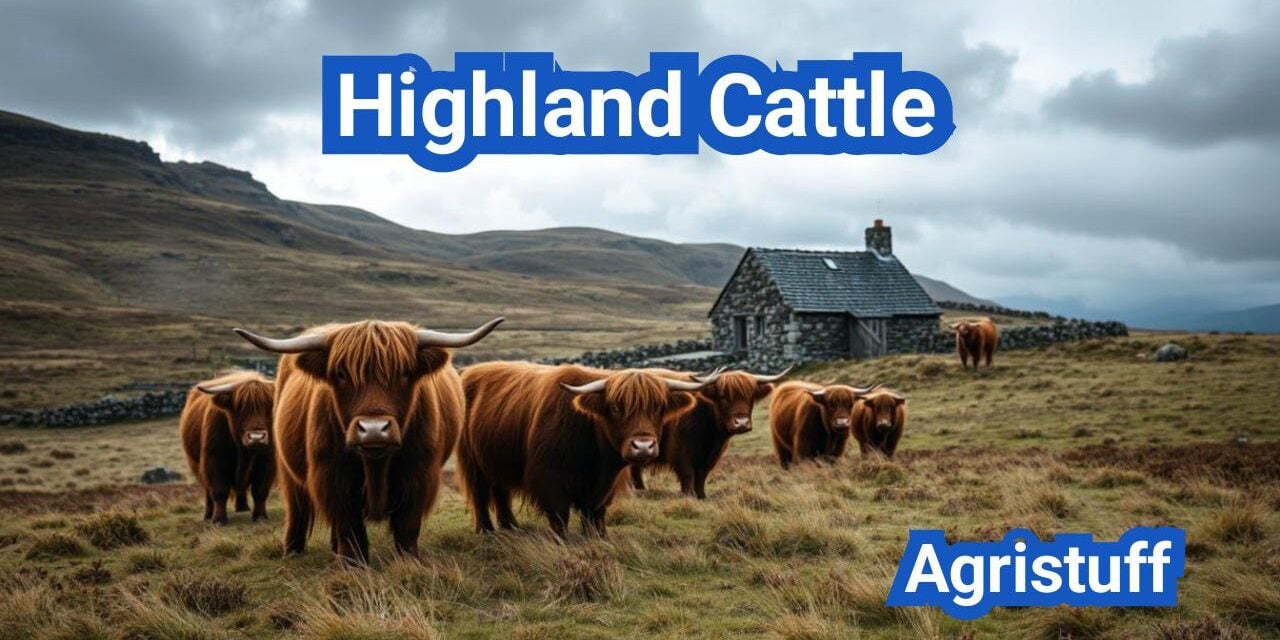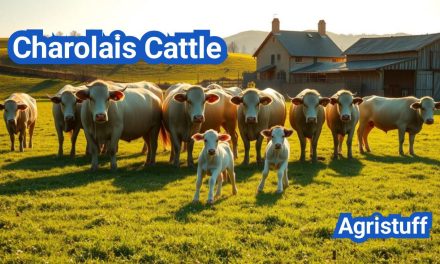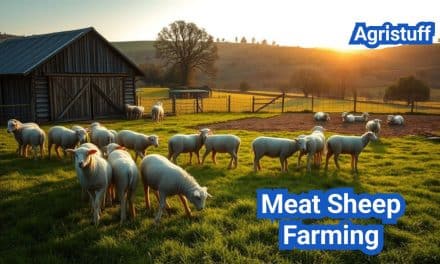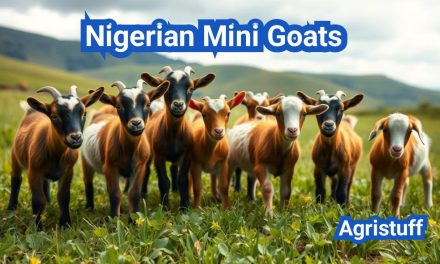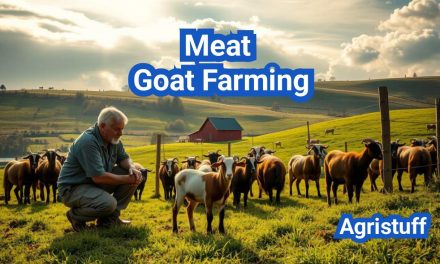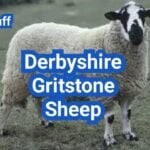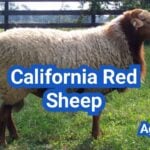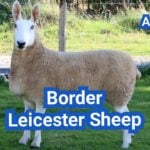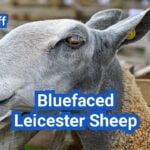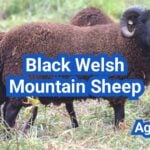The Highland Cattle breed has a rich history that spans centuries, originating in the rugged and remote Scottish Highlands. The harsh climate and geography of their native land led to a process of natural selection, resulting in a robust and adaptable animal.
Known for their distinctive shaggy coats and hardy nature, Highland Cattle have been prized for their ability to thrive in challenging environments. Their history and characteristics make them a unique and valuable breed.
Key Takeaways
- Highland Cattle originated in the Scottish Highlands.
- The breed is known for its hardiness and adaptability.
- They have a distinctive shaggy coat.
- Highland Cattle are valued for their ability to thrive in harsh environments.
- The breed has a rich history spanning centuries.
The Ancient Origins of Highland Cattle
With a history spanning centuries, Highland cattle have their roots in the harsh yet beautiful Scottish Highlands. This breed has evolved over time, shaped by the rugged environment and the needs of the local population.
Native Beginnings in the Scottish Highlands
The Scottish Highlands provided a challenging environment that tested the hardiness of early Highland cattle. Originally, there were two distinct classes: the slightly smaller and usually black Kyloe, primarily found on the islands off the west coast of northern Scotland, and a larger, generally reddish animal inhabiting the remote Highlands of Scotland.
These early cattle were valued for their ability to thrive in harsh conditions, producing high-quality meat and hides. Their adaptability to the rugged terrain and climate made them an integral part of Scottish agriculture.
Evolution as One of the Oldest Registered Cattle Breeds
Over time, Highland cattle evolved into one of the oldest registered cattle breeds, known for their distinctive characteristics and hardiness. The breed’s registration and formal recognition helped preserve its unique traits and ensured its continuation.
The Highland Cattle breed has been cherished not only for its physical attributes but also for its intelligence and robust nature. As one of the oldest registered breeds, it has a rich history that is well-documented, allowing breeders and enthusiasts to trace its lineage and development.
Historical Development and Cultural Significance

Highland cattle have a rich history that spans centuries, with their origins and development closely tied to the Scottish Highlands. Their historical significance extends beyond their role as a cattle breed, as they have been integral to the agricultural practices and cultural heritage of Scotland.
Role in Scottish Agriculture Through the Centuries
For centuries, Highland cattle have been a cornerstone of Scottish agriculture, thriving in the rugged landscapes of the Highlands. During the 18th century, thousands of Highland cattle grazed upon the forests and hills of Strathspey, and in the summer, they were even taken up into the high Corries. This practice not only showcased their adaptability but also highlighted their importance in utilizing marginal lands that other cattle breeds could not.
Their role in Scottish agriculture was multifaceted. They provided meat, milk, and hides, contributing to the local economy. Moreover, their hardiness and ability to survive on sparse vegetation made them ideal for the challenging Scottish terrain.
Introduction and Spread to North America
The introduction of Highland cattle to North America marked a significant chapter in their history. Brought over by Scottish immigrants, these cattle quickly adapted to the new landscapes, finding favor among farmers for their hardiness and the quality of their beef. The climate and terrain of North America, particularly in regions like Canada and the northern United States, proved suitable for Highland cattle, allowing them to thrive.
The spread of Highland cattle across North America was facilitated by their desirable traits and the growing interest in alternative cattle breeds. Today, they are found across the continent, with many breeders valuing them for their unique characteristics and the premium beef they produce.
Understanding Highland Cattle Characteristics
Highland Cattle are renowned for their unique physical characteristics, which have adapted them to harsh environments. Their distinctive features not only make them visually striking but also contribute to their hardiness and versatility.
The Distinctive Double Coat
One of the most notable characteristics of Highland Cattle is their double coat, which consists of a soft, dense undercoat and a longer, guard hair layer. This double coat provides excellent insulation against cold temperatures and harsh weather conditions. The outer layer is water-resistant, helping to protect the animal from rain and snow.
The double coat is not just a functional adaptation; it also gives Highland Cattle their characteristic shaggy appearance, often described as “fluffy.” This unique coat requires regular grooming to prevent matting and to maintain its health and appearance.
Color Variations and Genetics
Highland Cattle are known for their wide range of colors, including red, ginger, black, dun, yellow, white, grey, tan, silver, and brindle. This color variation is a result of genetic diversity within the breed. The genetics behind the coat color are complex, involving multiple genes that interact to produce the final color.
- Red and ginger are common colors, often associated with the breed’s Scottish heritage.
- Black Highland Cattle have a sleek, dark coat that is striking in appearance.
- Dun is a lighter color, ranging from a light tan to a darker, more muted tone.
The genetic variation in coat color adds to the breed’s visual appeal and diversity, making each animal unique.
The Iconic Highland Horns
Highland Cattle are also known for their iconic horns, which are a distinguishing feature of the breed. Both males and females can have horns, although they are generally larger and more robust in males. The horns are made of keratin, the same protein that makes up human hair and nails.
The horns serve several purposes, including defense against predators, establishing dominance within the herd, and even helping to regulate body temperature. The size and shape of the horns can vary, with some animals having long, curved horns that are quite striking.
In conclusion, the characteristics of Highland Cattle, including their double coat, color variations, and iconic horns, make them a unique and valuable breed. Their adaptability, hardiness, and striking appearance have made them a favorite among cattle breeders and enthusiasts alike.
Size, Weight and Physical Structure

Understanding the size, weight, and physical structure of Highland Cattle is crucial for breeders and enthusiasts alike. This breed is known for its hardiness and distinctive physical attributes.
Standard Measurements for Bulls and Cows
Highland Cattle are characterized by their robust build and significant size. Mature bulls can weigh up to 800 kg (1800 lb), while heifers can weigh up to 500 kg (1100 lb). The average height for males is around 1.2 to 1.4 meters (4 to 4.7 feet) at the shoulder, with females being slightly smaller.
Size and weight are critical factors in the breeding and management of Highland Cattle. Their size contributes to their ability to withstand harsh weather conditions and rough terrain.
Growth Patterns from Calf to Maturity
The growth pattern of Highland Cattle from calf to maturity is a gradual process. Calves typically weigh between 25-35 kg (55-77 lb) at birth. They grow steadily, reaching maturity at around 2-3 years of age.
Proper nutrition during the growth phase is essential to ensure that the cattle reach their full potential in terms of size and weight.
Comparing Highland Cattle to Other Breeds
Highland Cattle are often compared to other hardy breeds such as Angus and Hereford. While they share some similarities, Highland Cattle are distinct due to their shaggy coats and robust horns.
| Breed | Average Weight (kg) | Height (meters) |
|---|---|---|
| Highland Cattle | 400-800 | 1.2-1.4 |
| Angus Cattle | 350-700 | 1.1-1.3 |
| Hereford Cattle | 400-900 | 1.2-1.4 |
The table above illustrates the comparative size and weight of Highland Cattle against other prominent breeds.
Highland Cattle Temperament and Behavior
Known for their docile nature, Highland cattle have become a preferred choice for many cattle breeders and farmers. Their temperament and behavior are key aspects that contribute to their popularity in various agricultural settings.
Natural Disposition and Intelligence
Highland cattle are recognized for their calm and gentle disposition. They are considered to be highly intelligent animals, which makes them relatively easy to manage. Their intelligence, combined with a strong will, means they can be trained effectively with positive reinforcement.
Farmers and breeders often praise Highland cattle for their docile nature, stating that they are less stressful to handle compared to more aggressive breeds. This characteristic makes them an excellent choice for farms that prioritize animal welfare and low-stress handling practices.
Key characteristics of their natural disposition include:
- Calmness in handling situations
- Intelligence that aids in training
- A generally docile nature
Maternal Instincts and Calf Protection
Highland cattle are also noted for their strong maternal instincts. Cows are protective of their calves, ensuring their safety and well-being. This protective nature is a valuable trait for breeders, as it contributes to higher survival rates among calves.
“The maternal instinct in Highland cattle is one of their most valuable traits, contributing significantly to the success of breeding programs.”
The strong bond between a Highland cow and her calf is a testament to their excellent maternal instincts. This natural behavior reduces the need for extensive intervention, making the breeding process more efficient.
Adaptability to Various Climates
One of the remarkable features of Highland cattle is their adaptability to different climates. Originating from the harsh Scottish Highlands, they have developed a robust constitution that allows them to thrive in a variety of environmental conditions.
Their thick double coat provides insulation against cold temperatures, while their ability to adapt to different grazing conditions makes them versatile for various grazing systems. This adaptability is a significant advantage for farmers operating in diverse climatic regions.
Benefits of their adaptability include:
- Thriving in cold climates due to their thick coats
- Flexibility in different grazing systems
- Robust health in varied environmental conditions
How to Start Breeding Highland Cattle

For those looking to enter the world of Highland Cattle breeding, the first step is selecting the right foundation stock. This involves choosing animals that embody the breed’s characteristics, such as a robust constitution, distinctive horns, and a thick double coat.
Selecting Foundation Stock
When selecting foundation stock, it’s crucial to consider the genetic diversity and quality of the animals. Look for breeders who are registered with a reputable association, such as the American Highland Cattle Association, to ensure you’re getting high-quality animals with documented pedigrees.
Genetic diversity is key to a healthy breeding program. It’s advisable to start with a small group of unrelated animals to minimize the risk of genetic disorders.
Optimal Breeding Age and Timing
Understanding the optimal breeding age is vital for a successful breeding program. Generally, Highland Cattle can be bred at around 15 to 18 months of age, but this can vary depending on factors such as nutrition and overall health.
The breeding season should be planned carefully to ensure that calves are born at the most favorable time of the year, typically in spring when pasture quality is best.
Gestation Period and Preparation for Calving
The gestation period for Highland Cattle is approximately 280 to 290 days, similar to other cattle breeds. Preparation for calving involves ensuring that the cow is in good health and has adequate nutrition.
Cows may produce calves well into their late teens, reducing the need for frequent herd replacement. This longevity is one of the advantages of breeding Highland Cattle.
By carefully planning and managing these aspects, breeders can establish a thriving Highland Cattle breeding program.
Step-by-Step Guide to Calving Season
With calving season on the horizon, breeders of Highland cattle need to ensure they’re fully prepared for the responsibilities ahead. Calving season is a pivotal time that requires careful planning and attention to detail to ensure the health and well-being of both the cow and the newborn calf.
Preparing for Calving
Preparation is key to a successful calving season. Start by ensuring that your facilities are ready, including clean and safe calving areas. It’s also crucial to have a well-stocked veterinary kit on hand, including essentials like obstetric gloves and antiseptic solutions.
Nutrition plays a vital role in the health of the cow and the development of the calf. Ensure that your cows are receiving adequate nutrition in the weeks leading up to calving, focusing on high-quality hay, silage, or pasture, depending on what’s available and appropriate for your operation.
The Calving Process and When to Intervene
Understanding the calving process is essential for knowing when to intervene. Normal calving can take several hours, and most cows can deliver without assistance. However, it’s crucial to monitor the process closely for signs of distress or difficulty, such as prolonged labor or abnormal presentations.
If a cow is experiencing difficulty, it’s essential to intervene appropriately. Dystocia, or calving difficulty, is less common in Highland cattle due to their relatively small calf size, typically around 60-70 pounds. Nonetheless, being prepared to assist is vital.
Post-Calving Care for Cow and Calf
After calving, both the cow and calf require careful attention. Ensure the calf is breathing properly and is dried off to prevent hypothermia. The cow should be monitored for any signs of infection or complications, and both should be checked for overall health.
Nutritional support is also critical post-calving. The cow’s nutritional needs will increase to support milk production for the calf. Ensure that both are receiving the necessary nutrients for optimal health and growth.
By following these steps and being prepared, Highland cattle breeders can navigate calving season with confidence, ensuring a healthy start for their calves and a productive year for their herd.
Crossbreeding Strategies with Highland Cattle

By integrating Highland Cattle into crossbreeding programs, farmers can leverage the breed’s renowned maternal qualities and robust nature. Crossbreeding Highland Cattle with other breeds can result in offspring that combine the desirable traits of both parents, potentially leading to improved beef quality and production efficiency.
Compatible Breeds for Crossbreeding
Highland Cattle can be crossed with various breeds to achieve specific production goals. Breeds like Shorthorn and Limousin are commonly used in crossbreeding programs due to their complementary characteristics. Shorthorn, for instance, brings a robust growth rate and high-quality beef, while Limousin contributes to leaner meat and efficient feed conversion.
The choice of breed for crossbreeding depends on the desired outcome, whether it’s to enhance beef quality, improve hardiness, or increase production efficiency. Other compatible breeds include Angus, known for its high-quality beef, and Simmental, recognized for its rapid growth rate and muscular development.
Expected Traits in First-Generation Crosses
First-generation crosses between Highland Cattle and other breeds often exhibit hybrid vigor, displaying improved growth rates and hardiness compared to purebred parents. The offspring can inherit the maternal instincts and robust nature of Highland Cattle, along with desirable production traits from the other parent breed.
For example, crossing Highland Cattle with a Limousin bull can result in calves with the tender beef of their Highland dam and the lean, muscular characteristics of their Limousin sire. This combination can lead to a more competitive market price for the beef while maintaining high quality.
Developing a Crossbreeding Program
To develop a successful crossbreeding program, farmers should start by defining their production goals, whether it’s to improve beef quality, increase calf vigor, or enhance hardiness. Selecting the right breed to cross with Highland Cattle is crucial and depends on the specific objectives of the program.
A well-planned breeding program also involves careful consideration of factors such as breeding season, nutritional management, and genetic diversity. Regular monitoring of the herd’s performance and adjustments as needed are key to achieving the desired outcomes.
Essential Nutrition and Feeding Practices

Understanding the nutritional needs of Highland Cattle is fundamental to their care and management. These hardy animals, originating from the Scottish Highlands, have specific dietary requirements that must be met to ensure their optimal health and productivity.
Understanding Highland Cattle Dietary Requirements
Highland Cattle are fantastic scavengers; they will eat almost anything if it has food value. Their diet primarily consists of grass, hay, and other forages. However, the quality and quantity of these feed sources can significantly impact their nutritional intake. A balanced diet for Highland Cattle should include adequate protein, energy, vitamins, and minerals.
As noted by agricultural experts, “The nutritional needs of cattle can vary based on factors such as age, sex, and stage of production.” For Highland Cattle, this means that calves, lactating cows, and bulls have different nutritional requirements. For instance, lactating cows require more energy and protein to support milk production for their calves.
Seasonal Feeding Adjustments
Seasonal changes can significantly affect the availability and quality of feed for Highland Cattle. During winter months, when pasture is scarce, hay and other conserved forages become the mainstay of their diet. It’s crucial to provide high-quality hay that is free from mold and has a good nutrient profile.
In the summer, when pasture is lush, Highland Cattle can graze on a variety of grasses and legumes. However, it’s also important to monitor pasture quality and ensure that it meets the nutritional needs of the cattle. Rotational grazing can be an effective strategy to maintain pasture health and productivity.
Supplementation Guidelines
While Highland Cattle are adept at thriving on roughage, there are situations where supplementation is necessary. For example, during periods of poor pasture quality or when the cattle have high nutritional demands, such as during late pregnancy or early lactation.
- Mineral supplements can help fill nutritional gaps, especially for minerals like calcium, phosphorus, and salt.
- Protein supplements may be needed if the diet is lacking in protein-rich feeds.
- Energy supplements can be useful during cold weather or when the cattle are under condition stress.
It’s essential to work with a veterinarian or a qualified nutritionist to determine the best supplementation strategy for your Highland Cattle, as over-supplementation can be as harmful as under-supplementation.
Effective Pasture Management Techniques

Proper pasture management is essential for maximizing the potential of Highland Cattle. Effective techniques not only improve the health and productivity of the cattle but also contribute to sustainable land use.
Designing Optimal Grazing Systems
Designing an optimal grazing system is critical for the well-being of Highland Cattle. This involves assessing the land, understanding the cattle’s grazing behavior, and implementing a system that ensures adequate forage availability throughout the year.
- Assess land quality and carrying capacity
- Understand seasonal forage production
- Implement fencing and water distribution strategies
By considering these factors, farmers can create a grazing system that supports the health and productivity of their Highland Cattle.
Implementing Rotational Grazing
Rotational grazing is a highly effective pasture management technique for Highland Cattle. It involves dividing pastures into smaller sections and rotating the cattle through these sections to allow for adequate rest and regrowth of forage.
Benefits of Rotational Grazing:
- Improved forage utilization
- Enhanced soil health
- Increased biodiversity
Implementing rotational grazing requires careful planning, including determining the optimal number of paddocks, stocking rates, and rotation schedules.
Pasture Improvement for Highland Cattle
Improving pastures is vital for maintaining the health and productivity of Highland Cattle. This can be achieved through various methods, including:
- Overseeding with appropriate forage species
- Applying fertilizers or soil amendments as needed
- Controlling weeds and invasive species
By enhancing pasture quality, farmers can provide their Highland Cattle with the nutrition they need to thrive.
Health Management and Disease Prevention

Ensuring the health and well-being of Highland Cattle involves several key practices. Their hardiness is one of the breed’s most notable characteristics, but like all cattle, they require careful management to prevent disease and maintain overall health.
Establishing a Preventative Health Program
A preventative health program is foundational to maintaining the health of Highland Cattle. This includes regular vaccinations, parasite control measures, and monitoring for signs of illness. Vaccinations should be administered according to a schedule recommended by a veterinarian, taking into account the specific diseases prevalent in your area.
Parasite control is another critical aspect, involving both internal parasite control through deworming and external parasite management, such as controlling ticks and flies. Regular monitoring for signs of illness or stress, such as changes in appetite or behavior, allows for early intervention.
Managing Heat Stress in Highland Cattle
Although Highland Cattle are adapted to cold climates due to their thick double coat, they can suffer from heat stress in hotter conditions. Managing heat stress involves providing adequate shade, ensuring access to plenty of cool water, and potentially adjusting grazing times to cooler parts of the day.
Breeding programs may also consider selecting for animals with characteristics that help mitigate heat stress, such as a slightly lighter coat color. Monitoring weather forecasts and being prepared to implement cooling measures during heatwaves is also crucial.
Common Health Issues and Treatment Approaches
Highland Cattle are generally hardy, but they can be susceptible to certain health issues, including respiratory infections and reproductive issues. Respiratory infections can be particularly problematic in young or stressed animals, requiring prompt veterinary attention.
Reproductive issues may arise, and a breeding soundness examination can help identify potential problems early. Working closely with a veterinarian to develop a health program tailored to your specific operation is essential for addressing these issues effectively.
By focusing on preventative care, managing environmental stresses, and being prepared to address common health issues, Highland Cattle breeders can help ensure the health and productivity of their herd.
Highland Cattle Beef Production

Highland cattle beef production is gaining popularity due to its distinct nutritional profile and rich flavor. Highland beef is known for being lower in fat and cholesterol and higher in protein and iron compared to other beef breeds, making it a healthier and more desirable option for consumers.
Understanding Highland Beef Quality
The quality of Highland beef is attributed to several factors, including the breed’s genetic makeup, diet, and rearing practices. Highland cattle are known for their hardiness and ability to thrive on rough grazing, which contributes to the unique flavor and tenderness of their beef.
- Leaner meat with less marbling
- Higher protein content
- Rich in iron and other essential minerals
These characteristics not only make Highland beef a premium product but also cater to the growing demand for healthier meat options.
Finishing Methods for Premium Meat
The finishing methods used for Highland cattle significantly impact the quality of the beef. Finishing on pasture or using a combination of pasture and grain can enhance the marbling and tenderness of the meat. Producers often opt for a finishing regimen that includes a period of grain feeding to improve the beef’s marbling and overall palatability.
- Pasture finishing for a leaner product
- Grain finishing for enhanced marbling
- Combination of pasture and grain for balanced quality
Marketing and Selling Highland Beef
Marketing Highland beef effectively requires highlighting its unique qualities and the sustainable production methods used. Certification programs and labeling can help differentiate Highland beef in the marketplace, appealing to consumers looking for premium and responsibly sourced products.
Direct marketing to consumers through farmers’ markets, online sales, and partnerships with high-end restaurants can also be effective strategies. Emphasizing the story behind the product, including the breed’s heritage and the producer’s commitment to quality, can help build a loyal customer base.
Conservation Grazing Applications

Conservation grazing initiatives often feature Highland Cattle, leveraging their unique characteristics for environmental stewardship. These programs aim to utilize the cattle’s grazing habits to improve land health, promote biodiversity, and support ecosystem services.
Environmental Benefits of Highland Grazers
Highland Cattle are well-suited for conservation grazing due to their hardiness and ability to thrive on poor pasture. Their grazing activities can lead to several environmental benefits, including:
- Habitat Creation: Grazing helps maintain open spaces, creating habitats for various species.
- Biodiversity Enhancement: By controlling vegetation, Highland Cattle promote the growth of diverse plant species.
- Soil Health Improvement: Their grazing patterns can contribute to soil aeration and nutrient distribution.
Setting Up a Conservation Grazing Program
Establishing a successful conservation grazing program involves several key steps:
- Assessing the land’s ecological conditions and setting clear conservation goals.
- Selecting the appropriate number and type of Highland Cattle for the grazing area.
- Implementing a rotational grazing system to manage vegetation effectively.
- Monitoring the program’s impact on the environment and making adjustments as necessary.
Case Studies of Successful Conservation Projects
Several conservation projects have successfully utilized Highland Cattle for grazing purposes. A notable example is a project that aimed to restore a degraded wetland area. By introducing Highland Cattle to the site, the project achieved significant improvements in vegetation diversity and wetland health.
| Project Location | Conservation Goals | Outcomes |
|---|---|---|
| Wetland Restoration Area | Restore wetland health, enhance biodiversity | Improved vegetation diversity, enhanced wetland function |
| Grassland Conservation Site | Maintain open grasslands, promote native species | Successful control of invasive species, promotion of native grasses |
Highland Cattle in the United States
Highland Cattle have become an integral part of the American agricultural landscape. Their hardiness and unique characteristics have made them a popular choice among cattle breeders across the United States.
Major Breeding Regions
The United States is home to a thriving Highland Cattle breeding community, with significant breeding operations found in various regions. States such as Montana, Wyoming, and Colorado have large ranches that specialize in Highland Cattle, taking advantage of the breed’s adaptability to rugged terrains and harsh climates.
Notable Breeding Regions:
- The Great Plains region, known for its vast grasslands and open spaces.
- The Rocky Mountains, where Highland Cattle thrive in the mountainous terrain.
- The Midwest, with its fertile soils and moderate climate.
American Highland Cattle Association
The American Highland Cattle Association (AHCA) was established in 1948 to promote and preserve the Highland Cattle breed in the United States. The association maintains a registry of purebred Highland Cattle, ensuring the breed’s integrity and providing a resource for breeders.
“The AHCA plays a vital role in supporting Highland Cattle breeders through its registry, educational programs, and networking opportunities.” – AHCA President
Shows, Auctions, and Networking Opportunities
Highland Cattle shows and auctions are essential events for breeders, offering opportunities to showcase their animals, exchange breeding stock, and connect with other enthusiasts. Major events include the annual AHCA National Sale and various regional shows.
Benefits of Participating in Shows and Auctions:
- Opportunities to network with other breeders and industry professionals.
- Exposure for breeding stock, potentially leading to increased sales.
- Education on best breeding practices and industry trends.
By participating in these events, Highland Cattle breeders in the U.S. can enhance their operations, improve their breeding programs, and contribute to the growth and development of the breed in America.
Building a Profitable Highland Cattle Business
Creating a lucrative Highland cattle business involves assessing the initial investment, implementing effective marketing strategies, and exploring diversification opportunities. Highland cattle provide the opportunity to produce premium quality beef with less cost and effort, making them an attractive option for farmers and ranchers.
Initial Investment and Setup Costs
The initial investment for a Highland cattle business includes purchasing foundation stock, setting up infrastructure such as fencing and watering systems, and acquiring necessary equipment. The cost of Highland cattle can vary based on factors like breed quality, age, and location.
Here’s a breakdown of the typical initial investment costs:
| Item | Cost Range |
|---|---|
| Foundation Stock (per head) | $1,000 – $3,000 |
| Fencing (per acre) | $300 – $1,000 |
| Watering Systems | $500 – $2,000 |
| Equipment (tractors, feeders, etc.) | $5,000 – $20,000 |
Marketing Strategies for Different Products
Effective marketing is crucial for the success of a Highland cattle business. Strategies can vary depending on the products being sold, such as beef, breeding stock, or value-added products like beef jerky or cattle hides.
Some successful marketing strategies include:
- Developing a strong online presence through social media and a dedicated website.
- Participating in agricultural shows and events to showcase the quality of your Highland cattle.
- Building relationships with local butchers, restaurants, and specialty food stores to sell directly to consumers.
- Creating value-added products to diversify revenue streams.
Diversification Opportunities
Diversifying your Highland cattle business can help reduce financial risk and increase profitability. Some diversification opportunities include:
- Offering guided farm tours or agritourism activities.
- Selling value-added products made from Highland cattle, such as soap or candles.
- Renting out pastures for conservation grazing.
- Breeding and selling specialty cattle for specific markets.
By carefully assessing initial investments, implementing effective marketing strategies, and exploring diversification opportunities, farmers and ranchers can build a profitable and sustainable Highland cattle business.
The Enduring Appeal of Highland Cattle
Highland cattle are exceptionally hardy and robust, and absolutely gorgeous, making them worthy of their worldwide popularity. Their unique double coat, iconic horns, and striking color variations have captivated breeders and enthusiasts alike.
The enduring appeal of Highland cattle lies in their adaptability, intelligence, and strong maternal instincts. These characteristics, combined with their rich history and cultural significance, have cemented their place in modern agriculture and conservation grazing programs.
As the demand for sustainable and environmentally friendly farming practices continues to grow, Highland cattle are poised to remain a popular choice for farmers and landowners. Their ability to thrive in challenging environments and produce high-quality beef makes them an attractive option for those seeking to capitalize on the trend towards locally sourced and eco-friendly products.
The Highland cattle appeal is undeniable, and their continued popularity is a testament to their unique characteristics and the passion of breeders and enthusiasts who champion these magnificent animals.
FAQ
What is the origin of Highland Cattle?
Highland Cattle originated in the Scottish Highlands, where they were bred for their hardiness and ability to thrive in harsh environments.
What are the characteristics of Highland Cattle?
Highland Cattle are known for their distinctive double coat, iconic horns, and varied color palette, including red, black, and white.
What is the temperament of Highland Cattle?
Highland Cattle are generally docile and friendly, with strong maternal instincts and a high level of intelligence.
How do I start breeding Highland Cattle?
To start breeding Highland Cattle, you need to select foundation stock, determine the optimal breeding age, and prepare for calving.
What are the dietary requirements of Highland Cattle?
Highland Cattle require a diet rich in fiber, with access to high-quality pasture and supplemental feeding as needed.
How do I manage the health of my Highland Cattle?
Establishing a preventative health program, managing heat stress, and monitoring for common health issues are crucial for maintaining the health of Highland Cattle.
What are the benefits of conservation grazing with Highland Cattle?
Conservation grazing with Highland Cattle can help maintain open spaces, promote biodiversity, and improve ecosystem health.
How do I market and sell Highland Cattle beef?
To market and sell Highland Cattle beef, you need to understand the quality of your product, develop a marketing strategy, and identify potential buyers.
What is the role of the American Highland Cattle Association?
The American Highland Cattle Association promotes the breed, provides registration services, and offers networking opportunities for breeders.
How can I build a profitable Highland Cattle business?
To build a profitable Highland Cattle business, you need to consider initial investment, marketing strategies, and diversification opportunities.
What are the advantages of crossbreeding with Highland Cattle?
Crossbreeding with Highland Cattle can introduce desirable traits such as hardiness and fertility into other breeds.
How do I care for Highland Cattle during the calving season?
During the calving season, it’s essential to prepare for calving, monitor the calving process, and provide post-calving care for cow and calf.
What are the standard measurements for Highland Cattle?
Standard measurements for Highland Cattle vary by age and sex, but mature cows typically weigh between 900-1,300 pounds.
Are Highland Cattle suitable for small-scale farming?
Yes, Highland Cattle can be suitable for small-scale farming due to their hardiness and relatively low maintenance requirements.
Conclusion of: Highland Cattle
Highland Cattle: a practical introduction
Highland Cattle are a heritage beef breed from Scotland known for long horns, a shaggy double coat, and a calm disposition that suits forage-first systems in the U.S. Highland Cattle appeal to homesteaders and commercial ranches alike because they convert rough pasture efficiently, handle harsh weather, and produce distinctive, fine-textured beef that sells on story and quality. This guide pulls together the history, origin, traits, breeding, husbandry, meat marketing, and buying tips you need to decide whether Highland Cattle fit your goals and land. Highland Cattle breed profile — The Livestock Conservancy
History & origin of Highland Cattle
Highland Cattle originated in the rugged Highlands and Western Isles of Scotland, where centuries of selection prioritized thriftiness, hardiness, and mothering under cold, wet, windy conditions. Those pressures forged Highland Cattle that thrive on marginal forage and stay productive with minimal inputs. Exports began in the 19th century, and today Highland Cattle are found worldwide while retaining their hallmark look and temperament that remain closely associated with Scotland’s pastoral heritage. Highland Cattle Society (Scotland)
Breed societies & records for Highland Cattle
To preserve type and provide buyer confidence, Highland Cattle are supported by long-standing breed societies. In North America, the American Highland Cattle Association (AHCA) maintains herd books, sets registration rules, and promotes breed education, shows, and junior programs. For new and expanding keepers of Highland Cattle, a society connection is the quickest path to sound genetics, mentorship, and a transparent paper trail. American Highland Cattle Association (AHCA)
Distinctive traits & breed standard of Highland Cattle
What sets Highland Cattle apart is the double coat: a long, water-shedding outer layer over an insulating undercoat that reduces the need for waste backfat. Highland Cattle are naturally horned, with sweeping horns that differ by sex, and they occur in several solid colors (commonly red, but also black, yellow, dun, silver, and white). These traits, combined with a moderate frame, create Highland Cattle that are efficient grazers, resilient, and immediately recognizable in any pasture. AHCA — Breed information hub
Temperament, fertility & mothering in Highland Cattle
Many owners choose Highland Cattle for a reputation of calm temperaments, easy handling, and strong maternal instincts. Highland Cattle cows typically exhibit good fertility and longevity, with calves that are vigorous at birth and protected by attentive dams. For first-time beef producers, the combination of manageable size and temperament helps Highland Cattle fit low-stress handling systems that emphasize quiet movement and good facilities. Livestock Conservancy — Highland Cattle overview
Frame size, weights & growth of Highland Cattle
As a medium-framed beef breed, mature Highland Cattle cows commonly fall near 900–1,300 lb and bulls in the 1,500–2,000 lb range depending on genetics and forage. Because their haircoat provides insulation, Highland Cattle often achieve desirable condition without laying down excessive external fat, which can improve efficiency in forage-based finishing. Thoughtful selection for growth and conformation keeps Highland Cattle competitive in a variety of markets. Livestock Conservancy — breed characteristics
Coat, climate & adaptation in Highland Cattle
The iconic coat allows Highland Cattle to shed rain and wind while conserving body heat, making the breed a natural fit for cold climates and high-rainfall regions. With shade, abundant water, and fly control, Highland Cattle also adapt to warmer U.S. environments. For any climate, basic facility design—wide alleys, solid footing, and calm movement—makes working horned Highland Cattle safe and predictable for people and cattle. Highland Cattle Society — about the breed
Beef quality & eating experience from Highland Cattle
Consumers appreciate the flavor, marbling potential, and fine texture associated with Highland Cattle beef, particularly when cattle are finished to appropriate endpoints on high-quality forage or a balanced ration. Highland Cattle help direct marketers tell a compelling story around heritage, welfare, and land stewardship—factors that can support premiums when combined with excellent eating quality and consistent customer communication. Beef Checkoff — beef quality resources
Grazing behavior & stocking for Highland Cattle
Highland Cattle are natural browsers that utilize brush and rough forage, but stocking must still match forage supply. Many U.S. pastures target around two acres per Animal Unit under good conditions, then adjust for rainfall, species mix, and management intensity. Rotational grazing, rest periods, and pasture scoring help Highland Cattle maintain steady gain while improving sward health over time. USDA NRCS — Pasture Condition Scoring
Nutrition fundamentals for Highland Cattle
Like all beef breeds, Highland Cattle need balanced energy, protein, minerals, and vitamins, with dry matter intake often near 2–2.5% of body weight on typical forages. Forage testing, mineral programs suited to local deficiencies (e.g., copper or selenium), and staged supplementation keep Highland Cattle productive through growth, gestation, and lactation. Work with a nutritionist to align Highland Cattle performance with your pasture curve. NASEM — Nutrient Requirements of Beef Cattle
Heat stress & summer care for Highland Cattle
Even with insulating coats, Highland Cattle can experience heat stress during hot, humid summers. Provide multiple clean water points, shade (trees or structures), ample airflow, and avoid gathering Highland Cattle during peak heat. Strategic clipping of show animals, fly control, and electrolytes during heat waves can support welfare and intake until conditions moderate. University of Missouri Extension — cattle heat-stress guidance
Breeding plans, timing & gestation in Highland Cattle
Plan to breed heifers so Highland Cattle calve around 24 months, after reaching adequate frame and body condition. Gestation in Highland Cattle averages ~283 days, so many herds use defined breeding seasons to align calving with forage flush. Whether you use AI or natural service, keep records on Highland Cattle fertility, calving ease, and calf growth to guide selection. AHCA — resources for breeders
Calving management & newborn care for Highland Cattle
Calving ease is a well-known strength of Highland Cattle, but preparation still prevents problems: clean, well-lit pens; quiet observation; colostrum intake checks; and a veterinarian on call. Handle Highland Cattle calves minimally in the first hours, tag calmly, and watch dams for retained placenta or udder issues. Good records let you cull toward an ever-easier-calving Highland Cattle herd. Beef Quality Assurance (BQA) — cow-calf best practices
Safe handling & facilities for horned Highland Cattle
Because Highland Cattle are horned, facility design matters: use wide alleys, appropriate headgates, and curved flow-through systems to reduce stress. Low-stress stockmanship—quiet movement, point-of-balance awareness, and minimal prodding—keeps Highland Cattle calm and employees safe while improving vaccination and processing outcomes. Training new handlers on Highland Cattle nuances pays long-term dividends. BQA — cattle handling guidelines
Dehorning ethics & alternatives for Highland Cattle
Many breeders keep horns on Highland Cattle to preserve breed character, while others dehorn for facility or mixed-herd safety. If you choose to remove horns on Highland Cattle, consult your veterinarian, use pain mitigation, and follow accepted welfare standards that prioritize calf comfort and healing. Clear protocols and trained staff are non-negotiable. AVMA — Dehorning & Disbudding Policy
Registration, buying tips & “mini” claims in Highland Cattle
Registration protects value: verify papers, parentage, and transfer procedures through AHCA when purchasing breeding Highland Cattle. Be cautious with online ads for “mini” Highland Cattle; there is no separate, recognized miniature registry category in the main U.S. association, so insist on transparency and documented stature genetics. Visiting reputable farms and shows is the best way to source sound Highland Cattle. AHCA — registry & breeder connections
Processing, inspection & labeling for Highland Cattle beef
Direct-to-consumer sellers of Highland Cattle beef must comply with slaughter inspection, label approval, and claims rules. Coordinate early with your processor on cut sheets and turn times, and review federal guidance on nutrition facts, claims (e.g., “grass-fed”), and safe-handling statements to keep Highland Cattle products compliant across channels. USDA FSIS — Labeling Guidance
Finishing strategies & niche markets for Highland Cattle
Many finish Highland Cattle on high-quality pasture plus hay or baleage in winter; others use strategic concentrate to hit preferred endpoints sooner. Finishing age for Highland Cattle varies with forage quality and target marbling, but steady growth and calm handling are universal. For niche brands, tell the Highland Cattle heritage story, emphasize welfare, and build repeat buyers through tastings and CSA boxes. SARE — Finishing Beef on Forages
Crossbreeding & conservation grazing with Highland Cattle
Some producers cross Highland Cattle with other beef breeds to blend hardiness and maternal traits with added growth, while others use purebred Highland Cattle for brush control and conservation grazing. Selecting the right bulls and cows for your climate, forage base, and market keeps Highland Cattle productive without sacrificing the breed’s signature attributes. Livestock Conservancy — conservation role
Frequently asked questions about Highland Cattle
Are Highland Cattle good for beginners? Yes, provided you invest in handling skills and good fences. Do Highland Cattle tolerate heat? With shade and water, yes, though they are naturally cold-hardy. What about horns? Highland Cattle are naturally horned; design facilities accordingly or work with your vet if you choose disbudding. How many acres? It depends on rainfall and forage; start conservatively, then adapt stocking to your pasture data with Highland Cattle. AHCA — FAQs & resources
Final thought
From small homesteads to regenerative ranches, Highland Cattle can anchor a low-input, forage-driven beef enterprise when matched to your climate and marketing plan. Invest in good stock, graze intentionally, and follow proven welfare and handling principles so Highland Cattle express the calm, hardy, profitable character that made the breed famous. BQA — start your plan
Sources & References
- American Highland Cattle Association (AHCA)
- Highland Cattle Society (Scotland)
- The Livestock Conservancy — Highland Cattle
- National Academies (NASEM) — Nutrient Requirements of Beef Cattle
- University of Missouri Extension — Heat-stress resources
- Beef Quality Assurance (BQA)
- USDA FSIS — Labeling Guidance
- Beef Checkoff — Research & Resources

